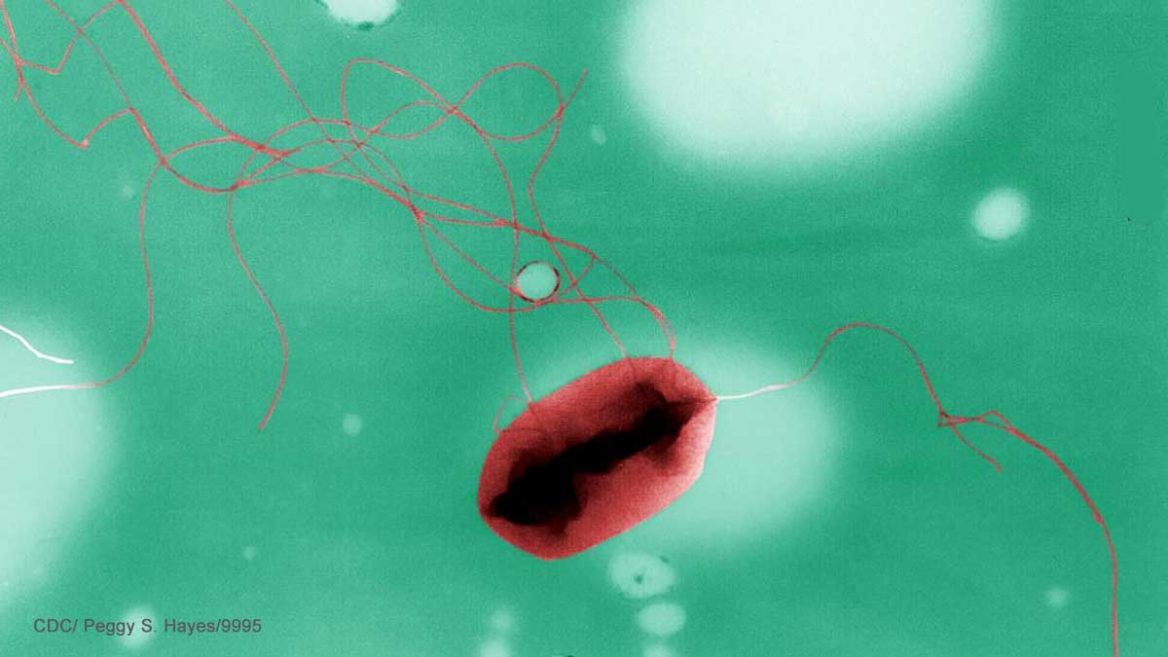A patient with an E. coli O157:H7 infection can end up in a coma, either a medically induced one or one caused by dangerous Shiga toxins produced by the E. coli bacteria. In either case, an E. coli-associated coma is generally accompanied by hemolytic uremic syndrome (HUS) and/or thrombotic thrombocytopenic purpura (TTP), both of which cause central nervous system (CNS) problems and permanent brain damage.
To contact Pritzker Hageman law firm, please call toll-free at 1-888-377-8900 or submit the firm’s free case consultation form.

Glasgow Coma Scale Used to Evaluate E. coli Patients
The Glasgow Coma Scale, which is used to evaluate a coma, has three categories: eye-opening response, verbal response, and motor response. The total Glasgow Coma Scale score is the sum of the scores in the three categories. The total Glasgow Coma Scale score range is 3 to 15 — the higher the score, that is, the lower the number, the less responsive the patient is. A patient with a score of 3 to 8 is the most severe. Patients with this number score are generally considered to be in a coma.
Glasgow Coma Scale for E. coli Patients
Eye Opening Response
- Spontaneous — open with blinking at baseline = 4 points
- Opens to verbal command, speech, or shout = 3 points
- Opens to pain, not applied to face = 2 points
- None = 1 point
Verbal Response
- Oriented = 5 points
- Confused conversation, but able to answer questions = 4 points
- Inappropriate responses, words discernible = 3 points
- Incomprehensible speech = 2 points
- None = 1 point
Motor Response
- Obey commands for movement = 6 points
- Purposeful movement to painful stimulus = 5 points
- Withdraws from pain = 4 points
- Abnormal (spastic) flexion, decorticate posture = 3 points
- Extensor (rigid) response, decerebrate posture = 2 points
- None = 1 point
Because children under five, the most common victims of E. coli HUS, are usually not able to give verbal responses similar to an older child or adult, the verbal response category is a bit different.
Glasgow Coma Scale Verbal Response Category
2 to 5 YRS
- Appropriate words or phrases = 5 points
- Inappropriate words = 4 points
- Persistent cries and/or screams = 3 points
- Grunts = 2 points
- No response = 1 point
0 TO 23 Mos.
- Smiles or coos appropriately = 5 points
- Cries and consolable = 4 points
- Persistent inappropriate crying &/or screaming = 3 points
- Grunts or is agitated or restless = 2 points
- No response = 1 point
Free Consultation with E. coli Lawyer about Lawsuit for Coma Patient
If your child has HUS, you and your child have legal rights, including the right to seek compensation for medical expenses, lost income, pain and suffering, emotional distress, and loss of quality of life from anyone who was responsible for the E. coli O157:H7 infection that caused the HUS.
If you would like to interview one of our attorneys before hiring our law firm, one of our E. coli lawyers will fly to meet with you.
To contact an E. coli lawyer at our law firm for a free consultation, call toll-free at 1-888-377-8900 or submit the online consultation form.
Resources: 1. David G. Nathan and F. A. Oski, Hematology of infancy and childhood, W.B. Saunders Co, Philadelphia (1993).
2. Hemolytic uremic syndrome and thrombotic thrombocytopenic purpura, Marcel Dekker, Inc. New York (1992).
3. http://www.unc.edu/~rowlett/units/scales/glasgow.htm.